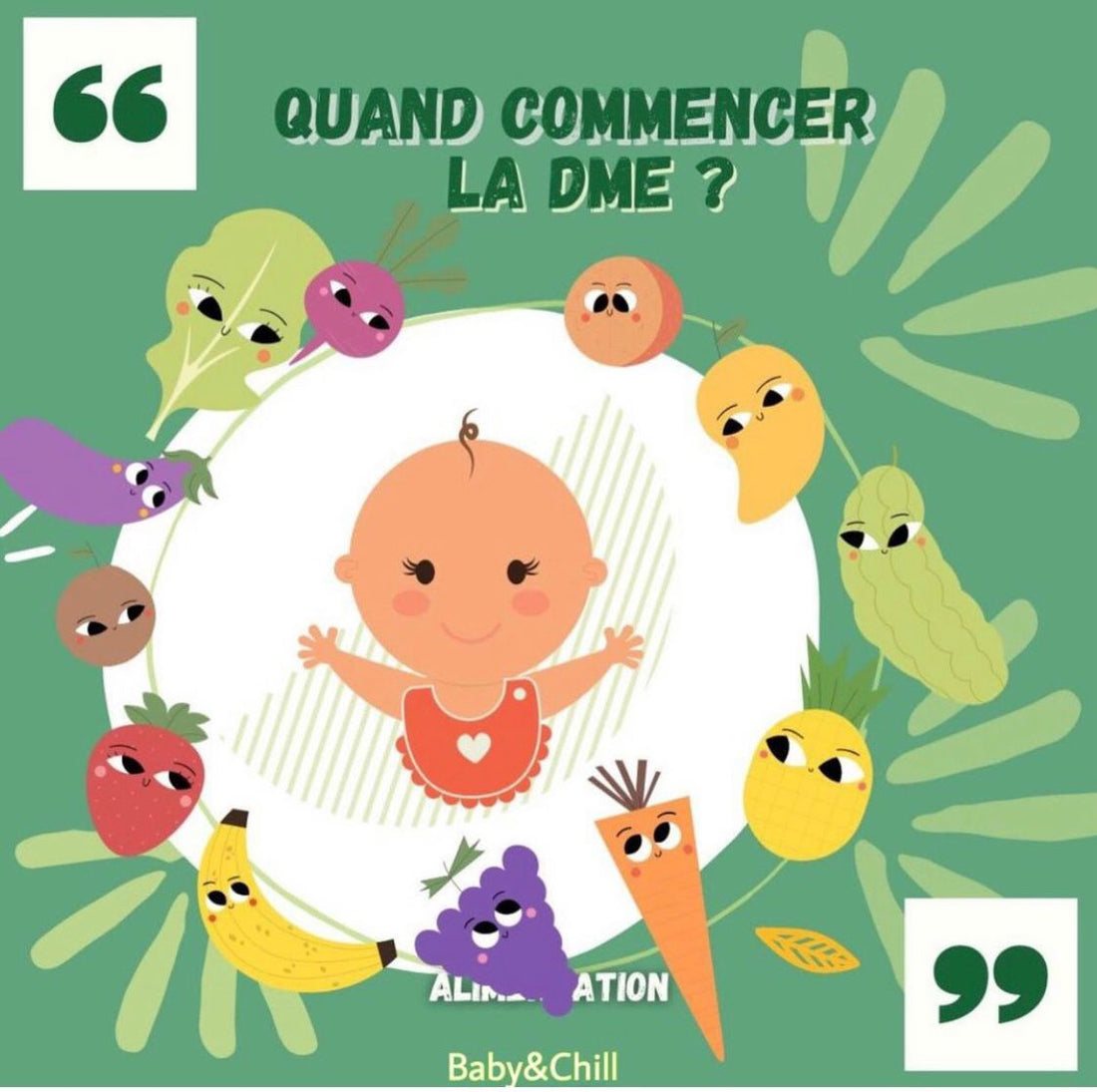
Baby-led food diversification
Share
What is DME?
Baby-led weaning, or BLW, is a feeding practice that encourages parents to let their children experiment with their own eating habits. In other words, the child learns to eat independently and independently. One of the characteristics that differentiates BLW from traditional feeding is that babies are offered solid foods in chunks, as opposed to purees.
When to start BLW?



What are the benefits of DME?
➜ Promotes fine motor skills : Unlike pureed foods, solid foods encourage children to handle them because they are served in their rawest form. Take the example of a carrot; in DME, you will present it in pieces (often steamed). The baby will then have the opportunity to see what it looks like, but above all, they will be able to touch it, crush it with their fingers, put it in their mouth, etc. When the child discovers food on their own, they accelerate the development of their motor skills, particularly hand-eye and hand-mouth coordination, which is necessary for their proper development.
➜ Encourages Awareness and Development : Another benefit of practicing BLW is awareness. Fruits and vegetables are excellent tools for introducing children to colors, smells, textures, and shapes. Each food offers a distinct and unique experience, expanding the possibilities for exploration.
Moreover, when in contact with them, the child is stimulated by:
- The taste : Between the acidity, bitterness, sweetness, and saltiness of foods, children have plenty to sharpen their palate. Some flavors are quite powerful, while others are milder. All this variety is stimulating for a child. However, care must be taken not to give just anything. We'll talk about this later in the guide.
- Touch : Very important in DME, touch is experienced in many forms. Grasping between the fingers, crushing, moving, superimposing, putting in the mouth... All these gestures are also beneficial for learning.
- Smell : Who doesn't remember the comforting smell of a meal from their childhood? Smell is a very stimulating sense. It's a way to influence preferences from a young age, so it's best to diversify your food choices!
- Hearing : As surprising as it may be, hearing also comes into play. The sound of biting into an apple, chewing an avocado, or cutting salad leaves... Everything is a pretext to attract attention.
If you've been following along, we've explained above that to let your child eat alone, you'll need to learn to let go. In other words, don't be in a hurry. Your baby (who has no concept of time) will wander. Take the opportunity to observe him. Live in the moment and admire his little exploits. Besides, he won't hide from you when it comes to showing you his!
At the age of 6 months, the child will explore his senses. Vegetables will be like a game for him, because he will touch, observe, taste, but also memorize! If he enjoys discovering his food, he will automatically retain a positive experience that he will associate with vegetables. BINGO, at 7 years old, he will then beg you to eat Brussels sprouts!
And a child who eats vegetables is a healthy child!
What are the disadvantages of DME?
We don't need to tell you anything, children take their time. It must be said that there are so many areas to explore, everything is ripe for discovery! Eating is no exception to the rule.
If time is a constraint for you, but you still want to practice BLW, don't worry, there are solutions. For example, you can:
- practice self-feeding only on weekends.
- prepare DME snacks and allow your child time to explore.
Our advice for successfully transitioning your child's diet
Your child won't gain independence after two BLW meals. This practice requires taking your time, both during the meal and over time. At first, babies will tend to play with their food. You need to let them find their bearings, let them discover and explore before they can truly feed themselves.
Ultimately, weaning is nothing more than a new stage of learning. For it to be beneficial, be willing to take your time and observe both successes and failures, because there will be meals where half the plate ends up on the floor. But that's how we learn, isn't it?
➜ Trust your child
As we stated above, children have natural reflexes and their own signals that warn them of danger. Understanding this can make it easier to let go of your fears.
Trusting your child means trusting yourself. And baby-led weaning is a good challenge to step out of your comfort zone. But it's also a way to get to know your little one better.
Take advantage of this time spent together to observe your baby's behavior, gestures, and attitude. In no time, you'll see achievements that will make you proud!
➜ Learn to let go
In DME, nothing is perfect.
And that's fine. Assume that what you're doing is already fine. In fact, while reading this guide, you may have realized that you're already practicing BLW in your daily life.
So don't expect everything to be exactly as you imagined it. By making this rule a priority, you'll see that the experience of self-feeding can take on a whole new dimension. For example, you can accept that:
➜ some meals are chaotic.
➜ Cleaning up after every meal is unpleasant, but it's just a quick change.
➜ Some days you don't have the patience.
➜ Get support if necessary
Nothing beats your own experience with your child, but for those who are more concerned, know that there are online training courses, workshops, and professionals who can support you in practicing BLW. This will allow you to:
➜ better understand your child's needs.
➜ gain organization for meal preparation.
➜ diversify the recipes.
➜ to know which foods to avoid.
➜ know what equipment to use.
➜ reassure you.


1108 comments
NlUnegHtRaXKC
iRcbuKyHxQN
upkrWOHhQCnDfcUF
nVTwMXbOQYINZRp
QuezpIDiOfYolKq